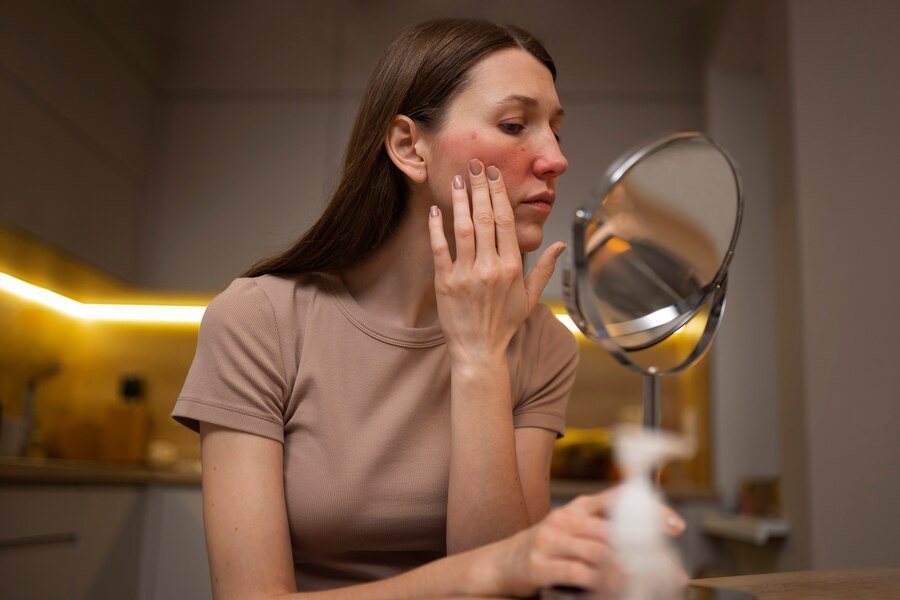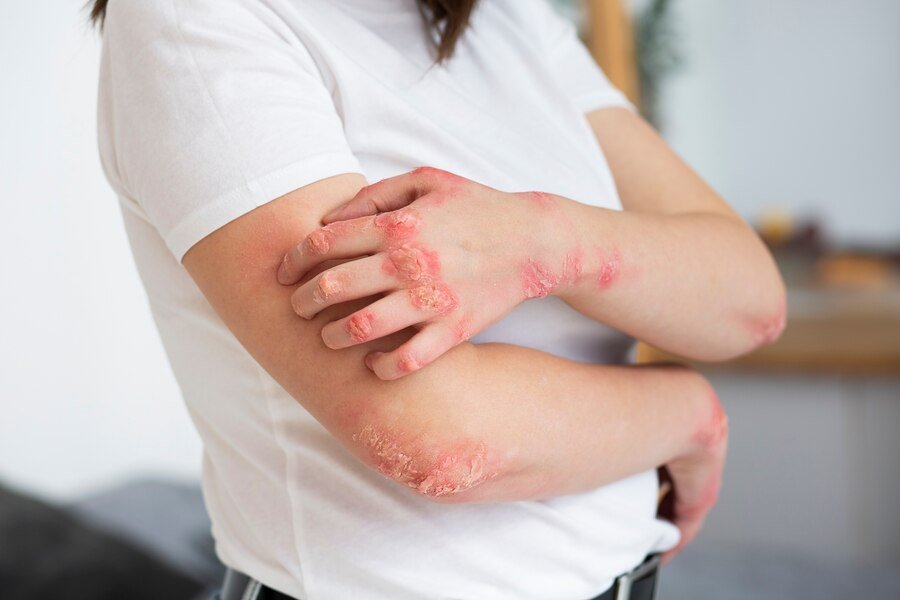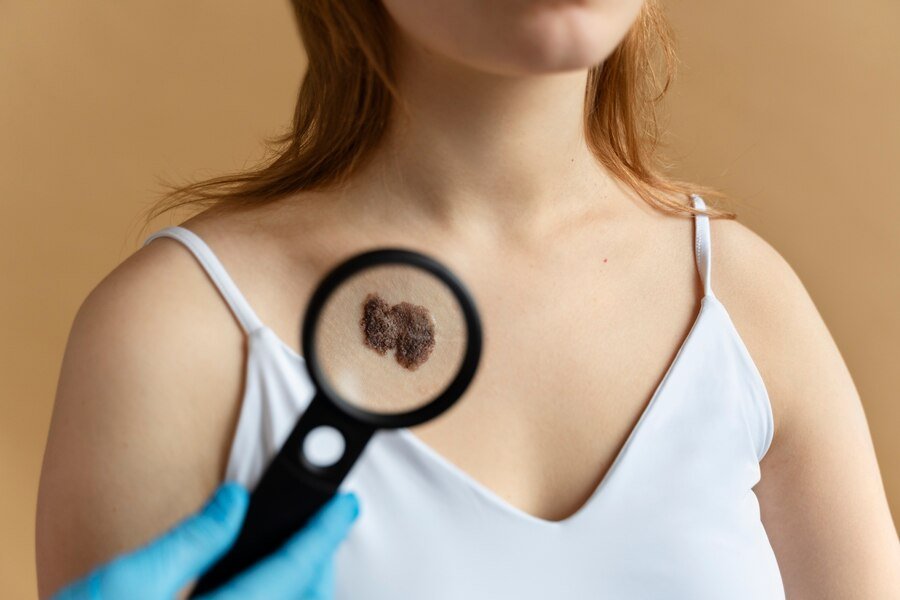Introduction
Step into our cozy corner of the world, where we chat about all things skincare. It’s a place where we’ll share the kind of secrets that not only give your skin Cancer that lovely glow but also keep it strong and safe from cancer. So, grab a cup of tea, and let’s talk about nurturing our skin the right way!
The Importance of Skin Care to Skin Cancer
Imagine your skin as a superhero’s shield, the first line of defense against the nefarious villains of the world. In our story, the villain is skin cancer, and our shield needs to be strong, resilient, and well-cared-for to protect us effectively. Skincare isn’t just about looking good; it’s about maintaining the integrity of our skin’s barrier.
Regular cleansing, moisturizing, and applying sunscreen are akin to training our shield to be tougher against UV rays, the arch-nemesis of skin health. By adopting a skin care regimen that includes sun protection, we’re essentially donning an invisible cape that helps ward off the harmful effects of the sun, which is a leading cause of skin cancer.

Brief Overview of Skin Cancer Prevalence and Impact
Skin cancer isn’t a rare side quest; it’s a main storyline affecting millions worldwide. With over 1.5 million new cases estimated in 2022 alone, it’s clear that this is a global challenge we’re facing.
In the United States, 1 in 5 Americans will develop skin cancer by the age of 70, and more than two people die of the disease every hour. These statistics are not just numbers; they’re stories, families, and lives. Understanding how common skin cancer is become essential. It marks the beginning of our collective effort to prevent the disease and to detect it early, when it’s most manageable.
Types of Skin Cancer
Join us on an exploratory mission through the skin’s galaxy, where we’ll encounter three notorious outlaws: Basal cell carcinoma, Squamous cell carcinoma, and Melanoma. These are not characters from a sci-fi adventure but real-world foes we must understand to protect our skin’s universe.
Basal Cell Carcinoma (BCC)
Basal cell carcinoma is like the sneaky space pirate of skin cancers. It’s the most common yet least aggressive type. Often appearing as a shiny, translucent bump on the skin, it’s the result of our skin cells going rogue due to too much sun exposure. BCC loves to hang out in sun-kissed areas like the head and neck, but it can also show up in less expected places. While it doesn’t usually travel to distant galaxies (metastasize), it can cause significant damage if not treated early, as it may invade nearby tissues.
Squamous Cell Carcinoma (SCC)
Next, we have Squamous cell carcinoma, the outlaw that’s a bit more aggressive than BCC. It’s known for its red, scaly appearance and can look like a firm bump or a flat sore with a crusty surface. SCC is the second most common skin cancer and can be more dangerous because it has a higher chance of spreading to other parts of the body if not caught in time. It’s like a villain that can escape the local jail and cause trouble elsewhere.
Melanoma
At last, we come across Melanoma, the most notorious of the three. It’s like the space invader of skin cancers, famous for spreading quickly through the body. Melanoma starts in the melanocytes, the cells responsible for our skin’s pigment, and can appear as a new dark spot or an existing mole that changes in size, shape, or color. It’s very important to find this enemy quickly because if it gets away, it can become very dangerous.
Causes of Skin Cancer
Start an exciting journey to discover what causes skin cancer. It’s very important to find this enemy quickly because if it gets away, it can become very dangerous.

Effects of UV Radiation
Let’s zoom in on our star, the Sun. It showers us with warmth and light, but also with ultraviolet (UV) radiation, an invisible villain in our tale. UV radiation is like a double-edged sword; it helps our bodies create vitamin D but too much exposure can lead to skin cancer.
Sunlight is composed of three distinct ultraviolet (UV) wavelengths: UVA, UVB, and UVC. UVA rays age our skin cells, leading to long-term damage like wrinkles, while UVB rays are the main culprits behind sunburns and can directly damage the DNA in our skin cells. UVC rays, the most dangerous, are thankfully blocked by our planet’s atmosphere and don’t reach us. It’s the UVA and UVB rays that we must shield ourselves from to prevent the saga of skin cancer from unfolding.
Genetic Predispositions
Our DNA is like the story of our lifes, and it can have surprises that we don’t see coming. Some of these surprises in our genes can make us more likely to get skin cancer. This means skin cancer can run in families. These genes are also why some of us have pale skin, light eyes, and freckles, which can make us more sensitive to the sun’s harmful rays.
Also, certain changes in our genes can be passed down from our parents, like the changes in the CDKN2A gene, which make it much more likely for us to get melanoma. It’s like some families have a special map that can lead to something valuable, but it can also lead to risks like skin cancer.
Environmental Influences
The place we live in is like the background for our skin’s story. Things like being around certain chemicals, living in places high up where the sun’s rays are stronger, and changes in the weather can all contribute to the risk of getting skin cancer.
Just like in stories where bad guys cause trouble, dirty air, and harmful factory stuff can damage our skin cells and make it easier for sicknesses like cancer to start. Even our modern lifestyle, which often involves spending more time outdoors or using tanning beds, can invite these environmental antagonists into our lives.
Symptoms of Skin Cancer
For taking care of your skin, it’s very important to watch for any changes or new spots. Skin cancer is tricky and can hide, looking like normal spots or little marks on the skin. Let’s dive into the symptoms with a dash of fun, but don’t let the lighthearted tone fool you—this is serious business!

New Growths or Moles on the Skin
Imagine your skin is a party and suddenly, uninvited guests start popping up. These party crashers can be new growths or moles that weren’t there before. They come in various shapes and sizes, sometimes flat like a wallflower or raised like someone trying to get the DJ’s attention. Keep an eye on these newbies—especially if they’re looking a bit odd or changing colors. They might just be benign gatecrashers, but sometimes they’re up to no good.
Changes in Existing Moles
Now, let’s talk about the regulars at your skin party—the moles you’ve known for years. If they start acting up, changing their outfit (color), growing in size, or changing shape, it’s time to pay attention. A mole that’s gone from a classic black tuxedo to a multicolored disco suit is definitely a cause for concern. It seems as if they’re signaling to you, ‘Look out, something is not right! And you should listen.
Unusual Skin Lesions or Sores
Lastly, we have the mysterious lesions or sores that seem to linger longer than the last guest at a party. They’re the ones that don’t heal, keep bleeding, or have a crusty demeanor. If you spot these persistent party fouls, it’s time to call in the professionals—your dermatologist.
Absolutely, let’s craft a blog post that’s both informative and engaging, with a sprinkle of creativity to make the topic of skin cancer prevention approachable for all ages.
Prevention of Skin Cancer
Protecting your skin from the sun’s rays is like gearing up for an epic battle against an invisible enemy. It’s a daily adventure where sunscreen is your shield, clothing is your armor, and regular skin checks are your strategy meetings. Let’s embark on this quest to keep your skin as safe as a treasure in a dragon’s lair!
Use of Sunscreen: Your Daily Potion of Protection
Think of sunscreen as your magic potion that you slather on to ward off the fiery breath of the dragon we call the sun. It’s not just any potion, though; it needs to have an SPF (Sun Protection Factor) of 30 or higher to be effective. Apply it generously about 30 minutes before you step outside, and remember, reapplication is key—every two hours, or immediately after swimming or dueling with water.
Protective Clothing: The Armor Against UV Rays
When you’re out on your daily quests, don’t forget to don your armor. This isn’t your typical knight’s gear, but lightweight, long-sleeved shirts, pants, and broad-brimmed hats that shield you from the sun’s relentless attacks. Sunglasses aren’t just for looking cool—they’re like your helmet, protecting your eyes from UV rays and keeping you battle-ready.
Regular Skin Examinations: Keeping a Watchful Eye
Regular skin examinations are like holding a council with your trusted advisors. It’s essential to know every inch of your kingdom—your skin. Keep a lookout for any new marks or changes to existing ones, and consult with your dermatologist, the wise wizard, at least once a year for a professional skin exam. They’ll help you spot any signs of treachery early on.
Diagnosis of Skin Cancer
Starting the journey to find out if you have skin cancer is like playing detective. You search for hints on your skin, collect proof, and talk to doctors to solve the puzzle. Let’s solve this puzzle in a fun and creative way, making sure we learn something and everyone can understand.

Skin Biopsies: Uncovering the Hidden Story
Imagine that a skin biopsy is like a special chat with your skin. It’s when a tiny bit of skin is picked, just like a reporter picks out parts of conversations to make a news story. This little skin piece is then sent to a lab, where a doctor looks at it really closely, like how an editor checks a story for important details. If the skin cells are acting crazy and out of control, it could mean skin cancer. We do this to figure out the hidden story of what’s happening inside the skin.
Consultations with Dermatologists: Meeting the Skin Experts
Once you’ve found all the hints, it’s time to see the super detective of skin – your skin doctor, or dermatologist. They’re like skin sleuths who look at all the clues, think about how your skin has been acting, and might use special gear to take a better peek at any weird spots. They’ve got lots of experience and can tell if something’s wrong just like that. They’re really important for figuring out if those odd-looking moles are just being silly or if there’s something more serious going on.
Treatment Options for Skin Cancer
Getting through skin cancer is like going on an exciting trip. You’ve got a team of super doctors and nurses with you, and you’ll explore lots of options to heal. Let’s get ready to learn about all the treatments that can help us win this fight, and we’ll make sure to understand a lot and have a good time too.
Surgical Methods: The Precision Strike
Imagine surgical methods as the skilled archers in your arsenal, offering a precise strike to target the cancerous cells. It resembles engaging in a high-pressure version of the ‘Operation’ game. The surgeon, akin to a master archer, carefully aims to remove the tumor and a margin of surrounding tissue to ensure the cancer is fully excised. In some cases, a technique called Mohs surgery is used, where the skin is removed layer by layer and examined until no traces of cancer remain. It’s a careful process that makes sure only the bad cells are removed while keeping as many of the good cells as possible.
Radiation Therapy: The Magic Spell
Radiation therapy is like calling upon a powerful mage to cast a spell that targets the cancer cells. This non-invasive treatment uses high-energy rays (think of them as magic beams) to damage the DNA of the cancer cells, hindering their ability to multiply. It’s a bit like using a sunlight spell to fend off vampires—except in this case, the vampires are the cancer cells, and the sunlight is the radiation.
Chemotherapy: The Alchemist’s Potion
Sure, here’s a simpler way to say it: “Chemotherapy is like a magic medicine in the battle against skin cancer. It uses strong drugs that work like warriors, cutting down the cancer cells’ protection. This medicine can be taken by mouth or given through the blood, and it goes all over the body to find and kill any hidden cancer cells. It’s a wide-reaching method, like throwing a big net to capture any tricky cancer cells that are trying to spread.
Case Studies and Personal Stories
Starting our adventure in skin care, we meet brave people who have fought skin cancer. Their winning stories are more than just tales; they give us hope and strength. Let’s learn about some true victories and examples that show us how tough people can be and why it’s so important to take care of our skin.
Success Stories in Battling Skin Cancer
A long time ago, in a place similar to ours, some people saw worrying marks on their skin. They didn’t just ignore these marks; they went to skin doctors for help. With treatments like surgery, radiation, and strong medicine, they beat skin cancer. Their stories of success are true and show us that if we find and treat skin cancer early, we can overcome it.
Real-life Examples
In the big world of taking care of our skin, there are many stories that can teach us important things. Take, for instance, the story of a young lady who noticed an odd spot on her skin. Concerned, she had it checked and learned it was early-stage skin cancer. Luckily, she got quick help from the doctors and got better soon. Then there’s the account of a gentleman who developed skin cancer due to excessive sun exposure. Thanks to advanced medical care, he too made a full recovery. She now shares his story with others to warn them about the sun’s harmful rays and how to avoid them.

